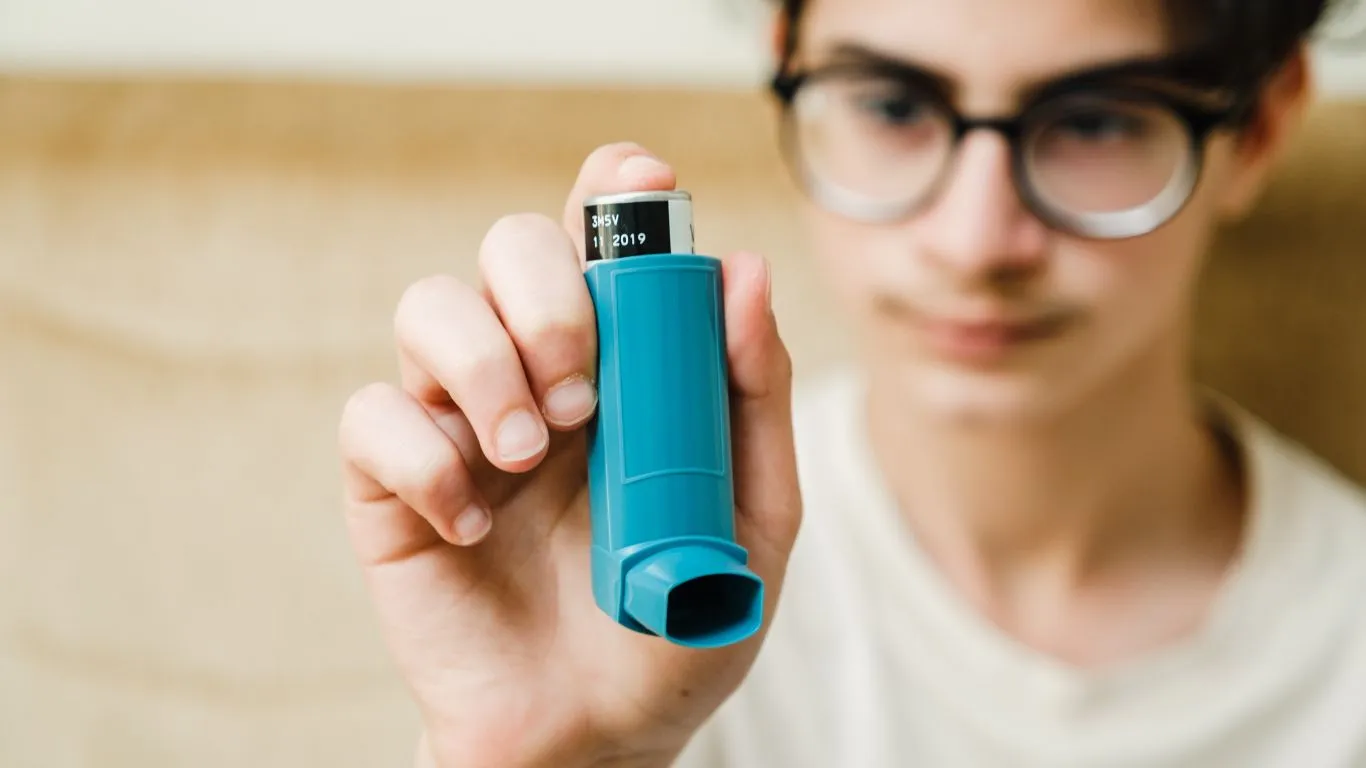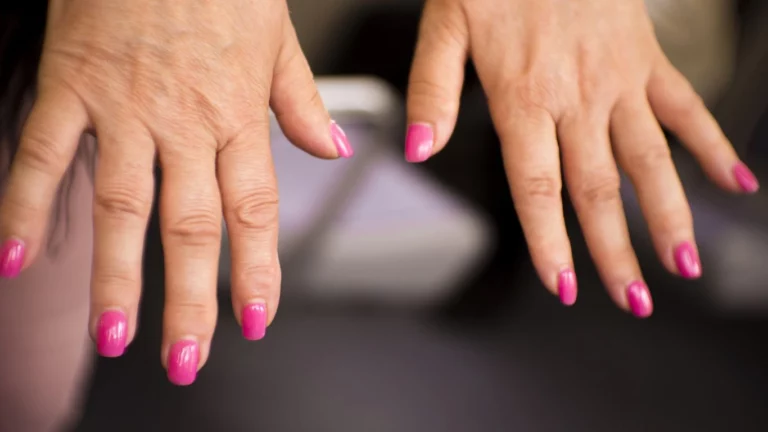Discover the Best Yoga Poses for Asthma Relief and Breathe Easier
Living with asthma can often feel like you’re constantly fighting to catch your breath. Whether it’s triggered by exercise, allergies, or even stress, finding natural ways to manage asthma is something I’ve always been passionate about as an asthma expert. Over the years, I’ve found that yoga can be one of the most effective methods to not only strengthen the lungs but also reduce stress, which is a big trigger for many asthma sufferers. Today, I’m going to walk you through some of the best yoga poses for asthma relief, and I’ll share a bit about how these poses have helped many of my clients (and even myself!).
The Best Yoga Poses for Asthma Relief: An Introduction

When you have asthma, the last thing you probably want to do is exert yourself too much. It may seem counterintuitive, but yoga can be a game-changer. It’s not about pushing your body to the extreme—it’s about working within your limits, gently stretching, and strengthening the muscles involved in breathing. The beauty of yoga for asthma relief is its focus on breath control, improving lung capacity, and promoting relaxation. As someone who has worked with many individuals dealing with respiratory conditions, I’ve seen firsthand how yoga can enhance lung function and reduce symptoms over time.
Understanding the Connection Between Asthma and Yoga
Before we dive into the best poses, let’s take a moment to understand why yoga is so beneficial for asthma. Asthma typically affects the airways, causing inflammation and narrowing, which leads to difficulty breathing. Yoga helps by promoting a sense of calm through deep breathing techniques, known as pranayama. These techniques focus on slow, controlled breaths that can relax the body and reduce inflammation in the airways. Additionally, yoga poses help open up the chest, encourage deeper inhalations, and improve circulation, making it easier to breathe.
The Power of Breath: Pranayama Techniques

One of the key elements of yoga that aids in asthma relief is pranayama, the practice of breath control. These exercises can help you regulate your breathing and increase your lung capacity. A personal tip from me: the more consistent you are with pranayama, the more effective it becomes in reducing asthma symptoms. Try to incorporate at least a few minutes of breathing exercises into your daily routine.
- Diaphragmatic Breathing (Abdominal Breathing): This technique involves breathing deeply into the abdomen rather than shallow breathing into the chest. It can help activate the diaphragm and improve airflow to the lungs.
- Nadi Shodhana (Alternate Nostril Breathing): This method of breathing helps balance the body’s energy and calm the mind. It’s particularly helpful when you feel anxious, which is a common asthma trigger.
- Kapalbhati (Breath of Fire): This technique involves rapid exhalations followed by passive inhalations. It’s known for clearing the airways and improving lung health.
Best Yoga Poses for Asthma Relief
Now that we’ve touched on the breathing techniques, let’s look at the best yoga poses for asthma relief. These poses are gentle, yet effective in strengthening the muscles around your chest and diaphragm. They can also open up your airways and improve your posture, which can be a major factor in managing asthma.
1. Mountain Pose (Tadasana)

Mountain Pose is a great starting point. It’s simple, yet incredibly effective for improving posture, which is essential when you have asthma. A good posture allows your lungs to expand fully, making it easier to breathe. Here’s how to do it:
- Stand tall with your feet hip-width apart, arms relaxed by your sides.
- Engage your thighs and lift your chest. Imagine you are reaching the top of your head towards the ceiling.
- Take slow, deep breaths, focusing on expanding your lungs and filling them completely with air.
Why it helps: Mountain Pose teaches you to stand tall, which is a great way to open up your chest and give your lungs more room to expand. This pose also helps improve circulation, allowing more oxygen to reach your body’s tissues.
2. Cat-Cow Pose (Marjaryasana-Bitilasana)
This dynamic pose is fantastic for loosening up your spine and opening up your chest. It’s also excellent for improving the flexibility of the ribcage, which can help you take deeper breaths. Here’s how to do it:
- Start on your hands and knees, with your wrists aligned with your shoulders and your knees aligned with your hips.
- As you inhale, drop your belly towards the mat, lift your chest, and gaze upward (Cow Pose).
- As you exhale, round your spine, tuck your chin towards your chest, and draw your navel in (Cat Pose).
- Repeat for 5-10 breaths, moving slowly and with control.
Why it helps: This pose stretches the chest, increases flexibility in the spine, and encourages the flow of air through the lungs. It’s a great way to reduce stiffness and improve breathing.
3. Downward-Facing Dog (Adho Mukha Svanasana)
Downward-Facing Dog is a classic yoga pose that opens up the chest, stretches the back, and encourages deep breathing. It’s one of my personal favorites because it not only stretches the body but also helps expand the chest and ribcage, giving your lungs more space. Here’s how you do it:
- Start on your hands and knees, then lift your hips towards the ceiling, straightening your legs.
- Press your hands into the mat, lengthening your spine and drawing your heels towards the ground (don’t worry if they don’t touch the floor).
- Focus on your breath, taking deep inhales and exhales.
Why it helps: This pose opens up the chest, encourages full lung expansion, and improves circulation. It also strengthens the arms and legs, which are essential for overall stamina and energy.
4. Child’s Pose (Balasana)
Child’s Pose is a gentle, restorative pose that is ideal for relaxation and stress relief. It also helps stretch the back and sides of the body, which can improve lung capacity. Here’s how to do it:
- Start on your hands and knees, then lower your hips back towards your heels.
- Extend your arms out in front of you, and let your forehead rest gently on the mat.
- Take deep, slow breaths, allowing your body to relax with each exhale.
Why it helps: This pose promotes relaxation and encourages controlled, deep breathing. It’s perfect for calming your nervous system and reducing stress, which can trigger asthma symptoms.
Additional Yoga Poses for Asthma Relief: Strengthening Your Practice

By now, you’ve got the basics down, but there are a few more yoga poses that can really elevate your asthma relief routine. These poses are designed to open up the chest, improve lung capacity, and calm your nervous system—perfect for those times when your asthma symptoms flare up or when you just need to relieve stress. Let’s continue with some additional poses that are not only easy to do but also incredibly effective in helping manage asthma symptoms.
5. Cobra Pose (Bhujangasana)
Cobra Pose is a fantastic backbend that stretches and opens up the chest, improving airflow and lung function. It’s also great for strengthening the muscles in the back and shoulders, which can support better posture and easier breathing. I’ve found that incorporating this pose into your routine can help release tightness around the chest area, a common problem for those with asthma. Here’s how to do it:
- Lie on your stomach with your legs extended behind you and the tops of your feet pressing into the mat.
- Place your hands underneath your shoulders, keeping your elbows close to your body.
- Inhale and gently lift your chest off the ground, straightening your arms as much as comfortable.
- Focus on opening your chest and lifting through the crown of your head while keeping your elbows slightly bent.
- Hold for a few breaths, then gently lower back down.
Why it helps: Cobra Pose is particularly effective for asthma because it opens up the chest and lungs, helping you breathe deeper and more fully. It also strengthens the back, improving posture, which is vital for optimal lung expansion.
6. Bridge Pose (Setu Bandhasana)
If you’re looking for a pose that strengthens both the legs and the chest, Bridge Pose is a great choice. This pose not only works on your chest muscles but also opens up the lungs and encourages deeper breathing. Personally, I love this one because it also targets the spine, improving posture and relieving tension in the upper body—key for asthma sufferers who often hold stress in their neck and shoulders. Here’s how to do it:
- Lie on your back with your knees bent and your feet flat on the mat, hip-width apart.
- Place your arms by your sides, palms facing down.
- Inhale as you lift your hips towards the ceiling, pressing through your feet and engaging your glutes and thighs.
- Make sure your chest is lifting towards your chin, and your knees are aligned with your hips.
- Hold for a few breaths, then gently lower your hips back to the mat.
Why it helps: Bridge Pose opens up the chest, allowing your lungs to expand more fully. It also strengthens the glutes and legs, helping support your overall posture and stamina, which are essential when managing asthma.
7. Fish Pose (Matsyasana)

Fish Pose is another great option for expanding the chest and improving lung capacity. While it’s a deeper backbend, it’s an excellent pose for asthma sufferers because it helps release tension in the chest and encourages deep breathing. I’ve worked with several clients who’ve told me that after practicing this pose, they feel more open in the chest and able to breathe more freely. Here’s how you do it:
- Begin by sitting on the floor with your legs extended straight in front of you.
- Place your hands beneath your hips, and press into the floor as you lift your chest up.
- Lean back on your elbows and gently arch your back, letting the top of your head rest on the floor.
- Keep your legs extended and your feet flexed, and breathe deeply as you stretch your chest upwards.
Why it helps: Fish Pose opens up the chest and throat, which are key areas to focus on for asthma relief. By stretching these areas, you allow your lungs to expand more fully, improving airflow and reducing any tightness in the chest.
8. Warrior II Pose (Virabhadrasana II)
Warrior II is a standing pose that not only strengthens the legs but also opens the chest and improves posture. It encourages proper alignment, which can help your lungs expand and function more effectively. I recommend this pose if you’re looking for something that also helps build strength, which can support your respiratory system. Here’s how you do it:
- Start by standing with your legs wide apart, with one foot turned out 90 degrees and the other foot turned slightly in.
- Extend your arms out to the sides, keeping them parallel to the floor, and gaze over your front hand.
- Bend your front knee while keeping your back leg straight, ensuring your knee is aligned with your ankle.
- Engage your core and maintain a strong stance, holding for several breaths.
Why it helps: Warrior II strengthens the legs, which are key for overall stability and stamina. It also helps open the chest and lungs, allowing for deeper breaths, and improves posture, which is crucial for maximizing lung capacity.
The Importance of Consistency in Your Yoga Practice
When it comes to yoga for asthma relief, consistency is key. It’s not about doing these poses perfectly right away—it’s about incorporating them into your daily routine so that your body can adjust and benefit over time. I always tell my clients to focus on quality, not quantity. Even just 10-15 minutes a day can make a world of difference. The more you practice, the more your body becomes accustomed to deep breathing, which will naturally help reduce asthma symptoms over time.
In my own practice, I’ve found that it’s not just about physical poses—it’s about developing a routine that incorporates mindful breathing and relaxation techniques. Over time, I’ve noticed a significant reduction in stress, and I feel much more in control of my breath. This is something I encourage everyone with asthma to try, because it’s not only about managing symptoms—it’s about improving your overall quality of life.
Additional Tips for Integrating Yoga Into Your Asthma Management Routine

If you’re new to yoga or have been struggling with asthma, here are a few tips to help you get the most out of your practice:
- Start Slow: Don’t feel pressured to do everything at once. Start with a few poses each day and gradually increase the duration and intensity as you feel more comfortable.
- Focus on Your Breath: Remember, yoga is all about breath. Focus on deep, controlled inhales and exhales to help calm your nervous system and improve lung function.
- Use Props for Support: If you have difficulty with certain poses, feel free to use props like blocks or straps to make the poses more accessible.
- Consult Your Doctor: If you have asthma, always check with your doctor before beginning any new exercise routine, especially if you’re experiencing a flare-up.
Yoga is a powerful tool for asthma relief, and by making it a consistent part of your routine, you can experience significant improvements in your lung function and overall well-being. Stay patient, stay consistent, and most importantly—stay mindful of your breath. Trust me, with time, yoga can truly make a difference in how you manage your asthma.
How to Create a Consistent Yoga Routine for Asthma Relief

Now that we’ve covered several yoga poses to help manage asthma, it’s time to talk about creating a consistent yoga practice that works for you. One of the key things I’ve learned through my years of experience as an asthma expert is that consistency really is everything. You can’t expect to see results after a few sessions—you have to make it a regular part of your routine to experience the benefits. But don’t worry; I’ll guide you through how to build a routine that fits seamlessly into your daily life, so you can start reaping the rewards as soon as possible.
Building Your Yoga Routine: Start Simple
Starting simple is crucial, especially if you’re new to yoga or have asthma. There’s no need to dive into advanced poses right away. In fact, I always suggest starting with just a few poses that focus on improving lung function and breathing. I personally started with just 10-15 minutes of yoga per day, and now, I do it every morning as part of my routine. It doesn’t need to be a lengthy, strenuous practice—consistency and mindfulness are what truly matter.
For your first few weeks, try to include the following in your yoga routine:
- 5 minutes of pranayama (breathing exercises): Start with diaphragmatic breathing and alternate nostril breathing to get your body used to controlled breathing.
- 10 minutes of gentle poses: Focus on simple poses like Mountain Pose, Child’s Pose, and Downward-Facing Dog. These will help with posture, lung expansion, and calming your nervous system.
- End with relaxation: Finish each session with a few minutes in Savasana (Corpse Pose), where you lie down and focus on your breath. This helps your body relax and integrate the benefits of the practice.
Consistency doesn’t mean pushing your body too hard, especially if you’re new to yoga or experiencing asthma symptoms. Over time, you’ll build more strength and flexibility, and your lung capacity will improve as you continue practicing. But even on tough days, just a short session can make a huge difference!
Common Challenges and How to Overcome Them
Starting a new routine, especially if you’re managing a condition like asthma, can be challenging. I totally get it. I’ve worked with countless individuals who start with the best intentions but get discouraged when they don’t see immediate results. Here’s the thing: yoga is not a quick fix. It’s a journey. And it’s okay to face challenges along the way. In fact, it’s expected!
Challenge 1: Shortness of Breath During Yoga
If you find that you’re struggling to breathe during certain poses, take a step back and focus on your breath. It’s crucial not to push yourself too hard. If a pose feels uncomfortable or causes you to strain, modify it. For example, in Downward-Facing Dog, you can bend your knees slightly if the pose feels too intense, or in Cobra Pose, lower your chest to the floor instead of fully lifting. Remember, the goal is to increase lung capacity and breathe easier—not to force yourself into a challenging position. Always listen to your body!
Challenge 2: Feeling Frustrated with Progress
Yoga is a practice of patience. You might not notice changes overnight, but over time, your lung capacity will improve, and you’ll start feeling more relaxed and less stressed. The key here is to stay committed and avoid comparing yourself to others. Every person’s journey is different, and your progress might look different from someone else’s. In my experience, it’s better to focus on small improvements rather than expecting instant results. Celebrate every breath you take during practice, because that’s a sign that you’re doing something great for your body.
Yoga and Lifestyle Changes: A Holistic Approach to Asthma Management
Yoga alone is an incredibly powerful tool for managing asthma, but it works best when combined with other lifestyle changes. Over the years, I’ve seen how a holistic approach can lead to even better asthma management. Along with yoga, consider these tips to help you on your journey:
- Maintain a Healthy Diet: Eating a balanced, anti-inflammatory diet can help reduce asthma symptoms. Focus on fruits, vegetables, whole grains, and lean proteins while limiting processed foods and sugar. Foods rich in Omega-3 fatty acids, such as fish and flaxseeds, can also help reduce inflammation in the lungs.
- Manage Stress: Stress is a huge trigger for asthma. Practicing yoga regularly can help manage stress, but also make time for relaxation techniques like meditation or journaling. Finding what helps you unwind is key to managing asthma in the long term.
- Avoid Asthma Triggers: Yoga is amazing for improving lung function, but it won’t completely protect you from environmental triggers like allergens or smoke. Be mindful of your surroundings and try to minimize exposure to common asthma triggers whenever possible.
- Get Regular Exercise: In addition to yoga, regular cardiovascular exercise is crucial for overall lung health. If you’re unsure about doing traditional workouts, walking, swimming, or gentle cycling are all excellent options.
Integrating these practices into your daily routine, along with yoga, will not only help you manage asthma but will also improve your overall quality of life. It’s all about taking a proactive approach and giving your body the support it needs to thrive.
References and Resources
If you’d like to dive deeper into yoga for asthma relief or need more resources, I highly recommend checking out the following:
- HealthUsias for more yoga tips, resources, and health articles.
- American Lung Association for information on asthma management and treatments.
- Yoga Journal for comprehensive guides on yoga poses and breathing exercises.
These resources are full of valuable information that can further support your journey to better lung health and overall well-being. Whether you’re just starting out or you’re already an experienced yogi, they can offer guidance, expert advice, and inspiration to keep you going.
Disclaimer
Please note that the information shared in this article is for educational purposes only and should not be considered medical advice. Always consult your healthcare provider before starting any new exercise routine, especially if you have asthma or any other medical condition. Every individual’s health needs are unique, and it’s important to tailor your yoga practice to your personal condition and capabilities.
Remember, managing asthma is a journey. Yoga is a wonderful tool, but it’s most effective when combined with a holistic approach that includes mindful breathing, stress management, a healthy lifestyle, and, when necessary, medical treatment. Stay patient, keep practicing, and take care of yourself!

Bianca Nala is a compassionate Nurse Practitioner with a strong background in primary and respiratory care. As a health writer for Healthusias.com, she combines her clinical expertise with a talent for clear, relatable storytelling to help readers better understand their health. Bianca focuses on topics like asthma, COPD, chronic cough, and overall lung health, aiming to simplify complex medical topics without losing accuracy. Whether she’s treating patients or writing articles, Bianca is driven by a single goal: making quality healthcare knowledge accessible to everyone.






